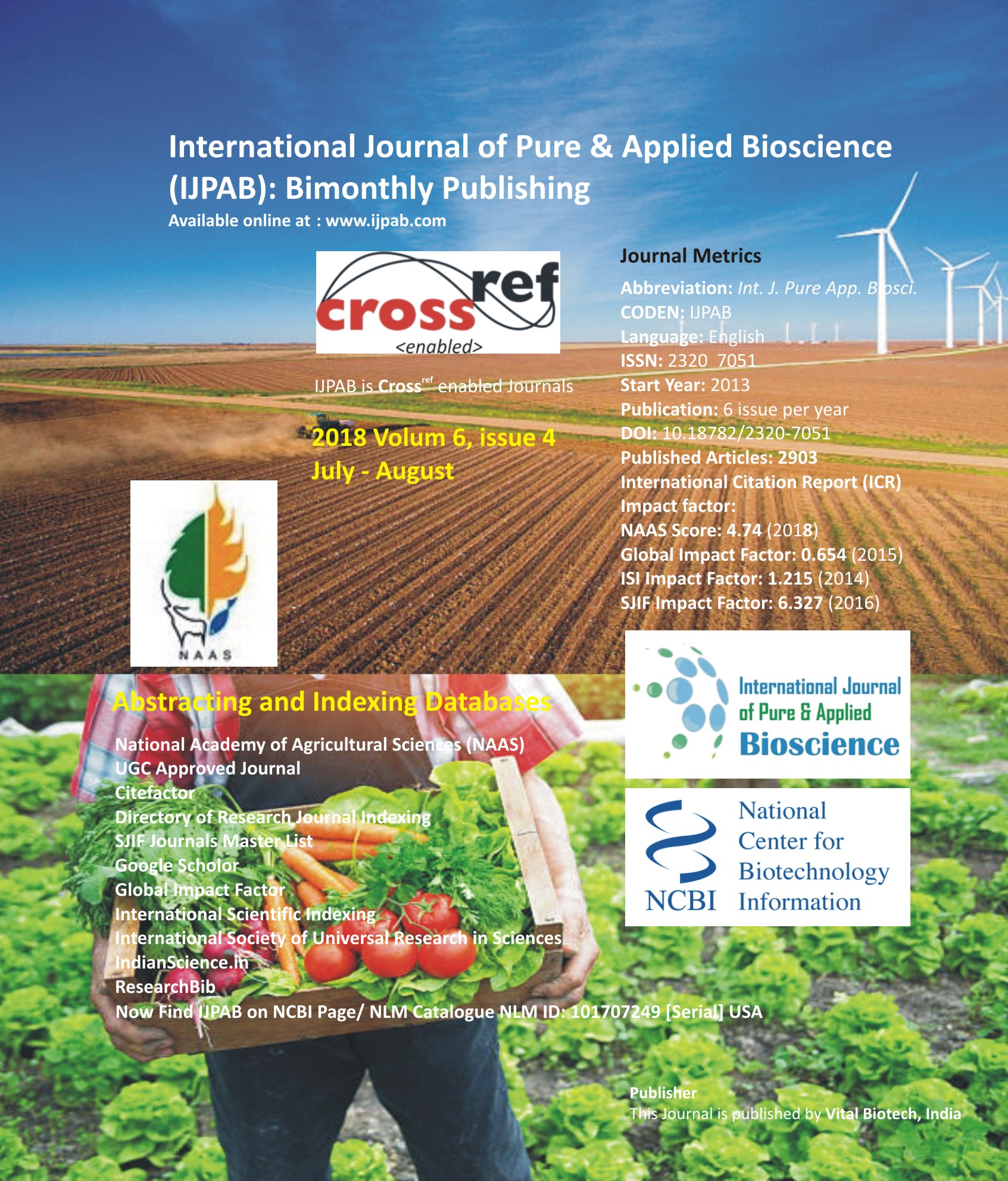
-
No. 772, Basant Vihar, Kota
Rajasthan-324009 India
-
Call Us On
+91 9784677044
-
Mail Us @
editor@ijpab.com
International Journal of Pure & Applied Bioscience (IJPAB)
Year : 2018, Volume : 6, Issue : 4
First page : (299) Last page : (302)
Article doi: : http://dx.doi.org/10.18782/2320-6504
A test to assess the Knowledge of the Rural School Children Regarding Sanitation and Hygiene
Jitumoni Neog1* and Juliana Sarmah2
1Research Scholar, 2Professor,
Department of Extension and Communication Management, College of Community Sciences
Assam Agricultural University, Jorhat - 785013, Assam
*Corresponding Author E-mail: jitumanineog@gmail.com
Received: 21.05.2018 | Revised: 29.06.2018 | Accepted: 5.07.2018
ABSTRACT
Sanitation and hygiene means promoting health through prevention of human contact with the hazards of wastes as well as the treatment and proper disposal of sewage or wastewater. Schools are a stimulating learning environment for children and stimulate or initiate change. If the students are brought into the development process as active participants on different aspects, they will be able to take care of their own health as well as the health of others and as a result they can become change agents within their families and a stimulus to community development for a healthy and safe environment. Therefore, assessing the knowledge of the school students from rural areas regarding sanitation and hygiene is very essential. A split half reliability coefficient of the test was corrected by using the Spearman Brown formula and it was found to be 0.24 which indicates that the knowledge check developed was found to be effective for collecting data from the school children.
Key words: Knowledge, Sanitation, Hygiene
Full Text : PDF; Journal doi : http://dx.doi.org/10.18782
Cite this article: Neog, J. and Sarmah, J., A Test to Assess the Knowledge of the Rural School Children Regarding Sanitation and Hygiene, Int. J. Pure App. Biosci.6(4): 299-302 (2018). doi: http://dx.doi.org/10.18782/2320-7051.6504

